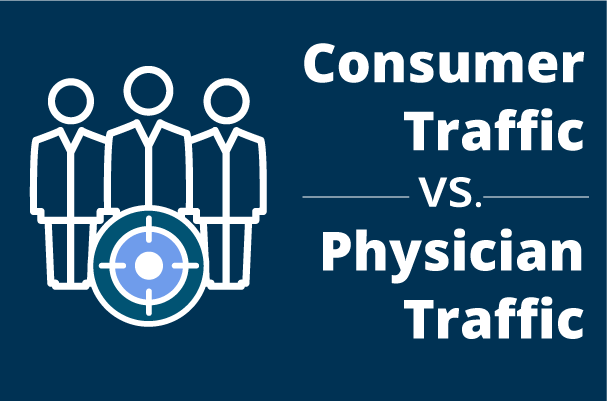What Metrics Matter for Physician Engagement?


Average Time on Site
Using Google Analytics and consumer benchmarks to analyze a physician audience can often be misleading. The average time spent on your website might not be as good as you may think. For example, you may be satisfied if the average time spent on your website meets the consumer industry average of 2 minutes. However, industry benchmarks in the healthcare industry are much different than consumer averages. A survey of our hospital clients had an average time on site of over 5 minutes. Presenting physicians with video content such as CME courses and surgical procedures that are relevant and easily accessible increases their overall website engagement. This results in a higher average time spent on page that more than doubles the consumer industry average.


Pages Per Session
Examining the average number of pages viewed during a visit on your site gauges how compelling and easily accessible your content is on your website. Google Analytics points to an industry average of 4 pages per session on a consumer site. While some would suggest that the greater number of pages per session indicates engagement is better, this is not a good indicator of performance and engagement on a physician directed site. Across our clients, physician sessions average less than 2 pages. It is not uncommon for physicians to visit a single page and view an entire surgical program lasting 30 minutes or more. In fact, a high page visit count could indicate a sub-optimal user experience. Physicians deeply engage with content. They do not quickly browse through multiple pages during each website session. If they have trouble finding relevant content quickly they are less likely to return. The physician audience desires a focused experience that allows them to be easily guided to the content that they are seeking. Since physicians are short on time, they want their visit to start on the piece of content that they are looking for so they can consume their information and proceed with their busy work schedules.

Mobile vs. Desktop
Recent studies of physician visits indicate that mobile devices have surpassed desktop in website traffic. Healthcare marketers optimize their website for mobile, while keeping in mind their marketing goals. Physicians visit a website primarily for three reasons: CME completions, clinical video views, and patient referrals. Desktop provides an optimal viewing experience for engaged physicians viewing these types of content, and as a result they end up spending more time on site. It is true that mobile drives more traffic, but at almost double the bounce rate, desktop still beats out mobile for site engagement. Typically, physicians view their email on a mobile device, and return on a desktop to perform one of the three transactional goals. Simply put, a physician is not likely to view a 60-minute CME course on their phone, or refer a patient from their mobile device. Mobile optimization should not be ignored, but a focus on desktop experience is still critical to content marketing campaigns.


Know Your Target Audience and Industry
The most important physician engagement metrics include transactional goals such as CME completions, referrals, and video completion. Other metrics such as pages per session, average time on site, pageviews, and returning user percentage are important if each are used as a piece of your overall analysis. Focusing on a single metric is one of the most common mistakes that healthcare marketers can make when analyzing their website traffic. Understanding your KPI’s are critical to analyzing the success of content marketing campaigns. To effectively engage a physician audience, you need to continually measure and optimize each campaign. Avoid using consumer benchmarks and averages to assess physician engagement and success of your website. Instead, focus on the proper industry averages and best practices that influence and measure physician engagement.

Share With Your Colleagues
